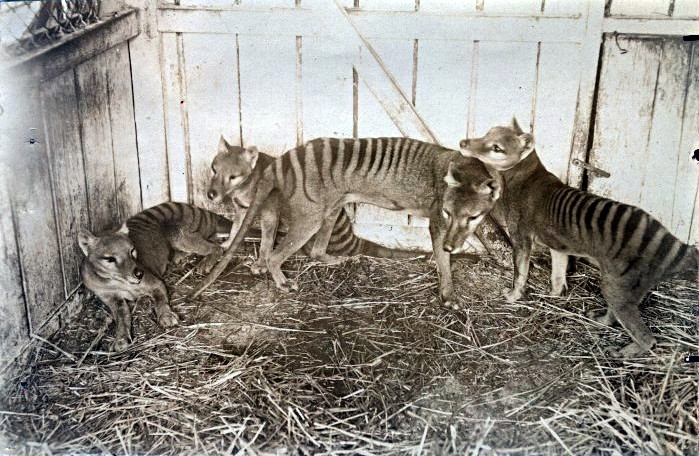Scientists make giant step towards cloning extinct Tasmanian tiger back to life
Thylacines last seen in 1934 and declared extinct in the 1980s

A long-extinct mammal could be resurrected by scientists after recent analysis of a 108-year old baby Tasmanian tiger's DNA helped them understand the evolution and extinction of the species. Their work is a major step towards bringing the species back from the dead through DNA cloning.
A team of researchers from the University of Melbourne successfully sequenced a baby Tasmanian tiger's entire genome, creating one of the best blueprints for an extinct species, reports National Geographic. The research was published in Nature.
The genome revealed much about the species and promises more. The researchers' aim was to understand why these tigers - or thylacines - evolved to look a lot like wolves.
The two species shared an ancestor 160 million years ago but led very different lives and were located in different places.
"The thylacine and the dog [or wolf] is the closest example of convergent evolution that we've ever seen measured between any two species," said lead author Professor Andrew Pask.
"We know a lot about dogs and wolves because those two species are not extinct but exploring an extinct species like the thylacine offers a new perspective on how convergent wolves' and tigers' DNA actually is."
The last Tasmanian tiger was spotted in the wild in 1934 and the species was declared extinct in the 1980s. Successfully sequencing a specimen's DNA was extremely difficult as there was very little DNA left in museum specimens. However, 13 babies were removed from their mother's pouches and preserved in ethanol. The DNA of one of them was viable for the geneologists' work.
"This pouch young seems to be a magical specimen that happens to have really good intact DNA," Pask said.
The team realised that despite the odd physical similarities between wolves and thylacines they had not developed genetic similarities. Further studies will be needed, said the scientists.
In 2008, Pask and his team were the first to make the genetic material of an extinct species function in a living one when they transplanted Tasmanian tiger DNA into mice.
However, the road to successfully cloning a whole individual is only just starting. "Making a whole functional genome, as opposed to having a sequenced genome, are two very different things so that's a big hurdle to get across," said Pask.
Although he would love to recreate a thylacine, Pask remains realistic: ""It would be at least a decade before we have the technologies to really start to pursue de-extinction."






















